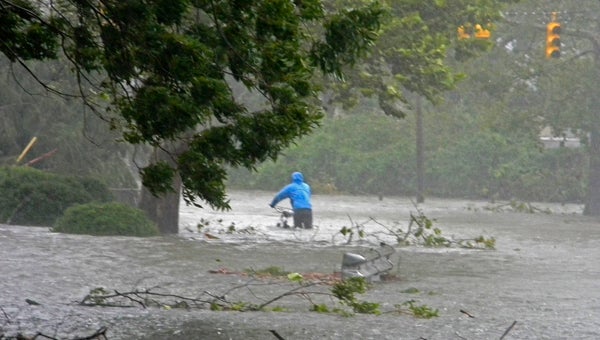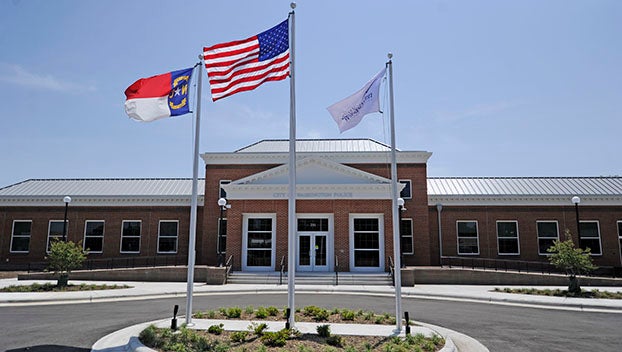Making climate history
Published 7:19 pm Saturday, March 8, 2014

FILE PHOTO | DAILY NEWS
RAIN GAUGE: The National Weather Service is seeking volunteers to help it keep track of rainfall across the state for North Carolina climate studies. During both normal and extreme weather events like Hurricane Irene (pictured), the data collected allows meteorologists to “fill in the gaps” to determine real precipitation.
The National Weather Service is looking for volunteers to help fill in its data gaps when it comes to precipitation.
For the past seven years, meteorologists have been relying on a network of observers to help them determine actual rainfall across the state, through the Community Collaborative Rain, Hail and Snow program, known in short as CoCoRaHS. According to NWS, the program arose because of a weather incident in 1997: a devastating flash flood in Fort Collins, Colo., caught many unprepared, caused $200 million in damage and led weather professionals to the conclusion there was a better way to map and report intense storms. CoCoRaHS was born in 1998 and in 2007 North Carolina became the 21st state to participate. Now, nearly 10,000 observations are reported each day, according to NWS.
The CoCoRaHS program requires a small investment on the part of weather observers: the purchase of an official 4-inch rain gauge and participation in a simple online training module. According to NWS, once submitted, volunteer observations are immediately available on maps and reports for the public’s view.
“North Carolina has one of the most complex climates in the U.S.,” Dr. Ryan Boyles, state climatologist and director of the State Climate Office, said in a press release. “Data gathered from CoCoRaHS volunteers are very important in better understanding local weather and climate patterns.”
Eastern North Carolina has need of more observers, according to David Glenn, a meteorologist with the NWS Weather Forecast Office in Newport. With the exception of Greene County, all eastern North Carolina counties have participants, with varying numbers: Pitt County has the most with 35; Tyrrell County has the least, with one participant. Eight participants are located in Beaufort County, but even with Friday’s 1 to 2 inches of rain across the region, only three called in their observations.
“If we had 50 people, it would really make a difference,” Glenn said. “It would really fill in the data gaps. … Our ultimate goal is to have a high-density network of precipitation observers. Nothing beats human-observed reports.”
Those human-observed reports can be submitted by anyone and everyone who would like to participate in the CoCoRaHS program.
“All age groups, all backgrounds, all interests. It can be next-door neighbors. You’d be surprised the difference there is from one yard to the next, especially when it comes to thunderstorms in the summer,” Glenn explained.
Glenn said the CoCoRaHS system is used in a variety of different ways and by many different agencies, from water quality to emergency management, from county officials determining when to spray for mosquitos to national studies after a weather event.
“You might think you’re inconsequential, but when a significant event occurs and that becomes a part of the climate history of the United States, that’s pretty darn cool,” he said.
For more information, visit www.cocorahs.org or visit the North Carolina CoCoRaHS page on Facebook.





